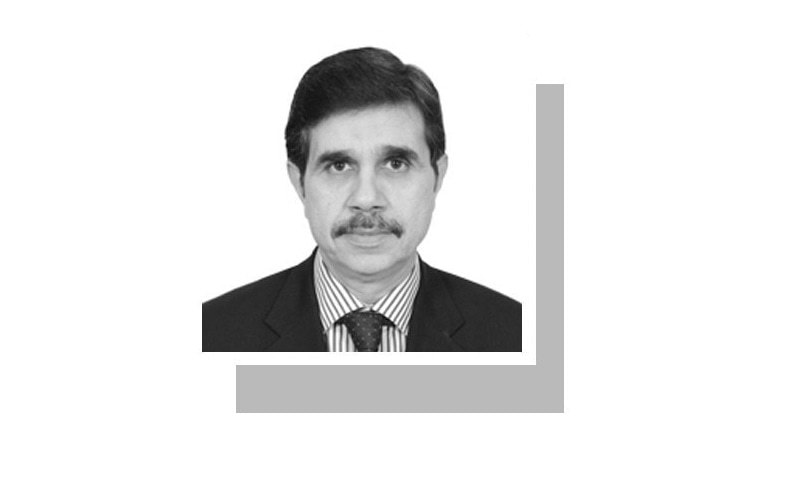
THE PricewaterhouseCoopers (PwC) report The World in 2050, that came out a few weeks ago, forecasts Pakistan as the world’s 16th largest economy — in terms of GDP — by 2050, ahead of Italy and Canada. The forecast is perceived by some to mean that Pakistan is on course to becoming a developed economy. However, a large economy is not necessarily a developed economy. India is the world’s third largest economy, much ahead of Canada, but that does not mean it is more developed than Canada.
While development is a broader and somewhat abstract concept, a larger economy is one that has greater GDP relative to others. GDP is the total income of all individuals of a country; other things being equal, the greater a country’s population the greater its GDP. There is not much to cheer about in being a larger economy, if being larger owes to an increase in population that earns little.
PwC has projected the GDPs of 32 countries using mostly a single set of assumptions. One is that countries will follow ‘growth-friendly’ policies. This is a big if, and what makes it even bigger is that we seem to be unsure what policies are growth-friendly and which ones are friendlier.
For example, building motorways, on which negligible cargo traffic plies, versus putting the 25 million out-of-school children in schools — which one is a growth-friendly policy and which one is friendlier? Are we following growth-friendly policies? Bear in mind that innovations like Google and Facebook are owed to human capital alone.
Rising inequality is a ticking time bomb.
‘Youth bulge’, ie more people entering the working age bracket than leaving it, and the level of inequality in the country are the two ticking bombs that may embarrass PwC on the projected size of Pakistan’s economy. The PwC’s report says that a huge increase in working age population delivers a ‘demographic dividend’. However, this depends upon whether the young people entering the job market will manage to find a decent job. Otherwise the kind of political unrest seen in the Middle East and North Africa in recent years cannot be ruled out.
Among the countries experiencing a youth bulge and to which the scenario painted above could apply, the PwC’s report includes Nigeria, Pakistan, Egypt and Philippines.
One study suggests that Pakistan witnessed the onset of the ‘youth bulge’ in 1990 which is likely to continue till 2045. Out of around 55 years of the bulge, half stands consumed.
With little evidence of reaping significant benefits from this youth bulge so far, scepticism prevails over its future potential. PwC assumes a 1.4pc per annum average GDP growth in Pakistan till 2050 due to population growth — the second highest after Nigeria’s 2.3pc among the 32 countries examined by PwC. Given Pakistan’s poor record of benefiting from the youth bulge, PwC’s estimates should be significantly trimmed.
A body of literature suggests that income inequality impedes growth through various channels. The PwC report also cautions that high inequality in some countries could be a huge drag on their economies. Quoting research, it argues that 1pc increase in the income share of the top 20pc decreases GDP growth by 0.08 percentage points while a similar increase in income share of the bottom 20pc increases GDP growth by 0.38 percentage points in the following five years.
While including domestic (economic) policies as drivers of inequality, the report tells us that mass education, heavy taxation of the rich and large social transfers (from rich to poor) reduced inequality from 1945-1980 in a number of countries. Inequality measured by the Gini coefficient has increased significantly over time in Pakistan. The question then is: should we expect inequality reducing policies in years to come? Our GDP in 2050 crucially hinges on this assumption. A buoyant economic scene is not in sync with increasing inequality and absence of policies that would curb it.
The return to four and eight years schooling factored in by PwC is 13.4pc and 10.1pc respectively. Studies, undertaken exclusively on Pakistan, show a much lower return on primary and secondary education.
Terrorism has not significantly affected the majority of the 32 countries examined by PwC. Therefore the report does not account for its adverse impact on the economies. But Pakistan is bearing the impact even today. The projections regarding Pakistan need to be revised accordingly.
All this is not to say that Pakistan has no economic potential at all — evaluating such potential requires a separate column. This piece only suggests that regardless of what the current economic scenario is, PwC’s forecast seems exaggerated as it does not account for specific growth-constraining conditions at home. It does not, therefore, afford an opportunity to celebrate.
The writer is a researcher at the Pakistan Institute of Development Economics.
Twitter: @khawajaidrees11
Published in Dawn, March 14th, 2017











































